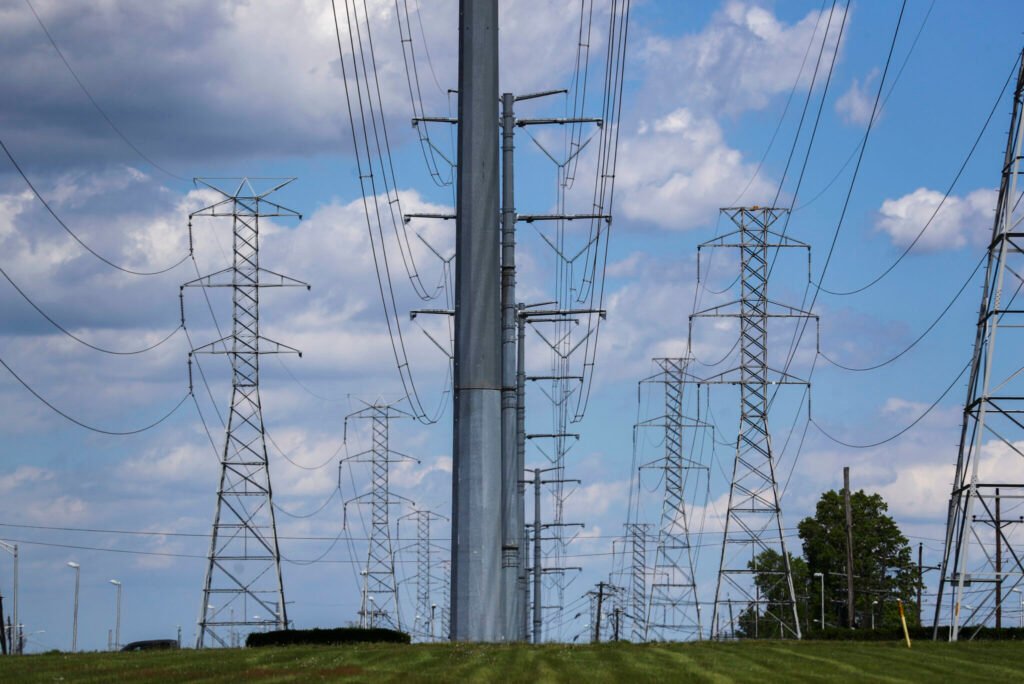As demand grows for energy from data centers, state officials are searching for methods to shield utility customers from the accelerating expenses linked to grid upgrades. A recent study indicates that regular consumers, rather than businesses, may face the highest impact from the escalating costs driven by the artificial intelligence (AI) surge.
Between 2024 and 2025, electricity usage by data centers contributed to a staggering $9 billion increase in costs, accounting for a 174% rise, according to a June report by Monitoring Analytics, which oversees PJM Interconnections—a group managing power grids across 13 states and Washington DC. This spring, power companies warned customers to brace for an increase of about $25 on monthly bills, anticipated to kick in from June.
“The spike in data center electricity demands and the anticipated growth are unprecedented and require a different approach from merely applying supply and demand principles,” the report stated.
Data centers serve as the backbone of modern computing. However, AI models from major tech companies like Amazon, Meta, and Microsoft consume significantly more power than traditional data processing. For instance, training a single chatbot like ChatGPT requires as much energy as 100 households use in a year, a fact shared by an AI founder earlier this year.
Data centers are expanding rapidly, with energy consumption forecasted to double by 2033 compared to 2023 levels, as highlighted in a 2024 report from Virginia’s Joint Legislative Audit and Review Board, even if no new data centers are constructed. In that case, energy usage would only rise by 15% by 2040.
As of July, there are over 3,800 data centers across the U.S., up from 3,600 in April. Most are linked to the same power grid that services homes and businesses.
“The impact on pricing is universal across PJM regions despite some differences in local rates,” remarked Joseph Bowring, president of Monitoring Analytics.
Rising Costs
Approximately 36 states—both conservative and liberal—are offering tax incentives for businesses to establish data centers. However, these incentives raise questions about whether they genuinely benefit consumers, given the increased costs for customers.
“I have reservations regarding whether encouraging data centers is truly advantageous from a state policy standpoint,” stated New Jersey Senator Andrew Zwicker, one of the bill’s co-sponsors. “These facilities aren’t creating many permanent jobs.”
According to Aripescoe, director of the Power Law Initiative at Harvard Law School, current energy cost structures are based on the premise that everyone shares in the advantages of reliable electricity. Yet, as some costs, especially related to infrastructure, are increasingly distributed to all consumers, the rapid development of data centers threatens to undermine this principle.
“These data centers use massive amounts of electricity, and many of the companies behind them are among the wealthiest globally. It’s unclear what tangible benefits local communities receive from their presence. Is there a justified reason for everyone to underwrite their energy consumption?”
This spring, Dominion Energy in Virginia filed a request to the State Corporation Commission intending to raise charges on average monthly bills, seeking a $10.92 increase to offset fuel costs.
Dominion and another regional supplier have proposed classifying data centers under a separate rate category to safeguard regular customers. However, additional fees imply an expected rise in costs potentially passed on to consumers.
In June, the Federal Energy Regulatory Commission convened a Technical Conference involving PJM and other operators to review the dynamics of large power suppliers, including several Californian entities.
The ongoing electricity supply by PJM is deemed insufficient to meet the current and future demands driven by powerful data centers, as noted in a report compiled post-meeting.
“Consumers are already facing billions in costs due to existing and projected data center demands,” the report emphasized.
Potential Solutions
One suggestion to mitigate the growing costs involves requiring data centers to generate their own power. This could mean partnering with developers to construct dedicated power plants. Alternative strategies, such as colocation—where a portion of electricity demand is sourced externally—are also being discussed, but establishing a distinct rate for data centers is a primary recommendation from analysts.
“Data centers ought to be recognized as a unique category due to their growth patterns and their impact on the grid—and because their history is unlike any other,” noted Bowling.
Some data centers are preemptively taking steps in this direction. Constellation Energy, which owns the Three Mile Island nuclear plant in Pennsylvania, has signed a $16 billion agreement with Microsoft to cater specifically to the energy needs of large tech firms in AI.
Meanwhile, in several states, lawmakers are actively exploring more binding solutions. New Jersey Senator Bob Smith, a Democrat who’s leading the Environment and Energy Committee, has proposed a bill mandating that all new AI data centers in the state source their power from clean energy alternatives, especially if neighboring states implement comparable regulations.
“It’s reassuring to see substantial companies like Microsoft and Meta showing interest in revitalizing aging facilities, but it underscores a level of urgency,” commented co-sponsor Zwicker. “Yes, we want you here, but your operations shouldn’t impose extra costs on our power users.”
New Jersey House members have initiated an investigation into PJM’s practices regarding annual utility acquisitions, particularly following a staggering 800% increase in electricity costs during the July 2024 auction, which contributed to the recent spike in bills.
Residents are feeling the strain, and Smith, along with his fellow sponsors, plans to reach out to other states within PJM’s framework this summer.
“What we’ve heard so far echoes our frustration. Many other groups within PJM share our sentiments,” Smith remarked.
He also mentioned discussions regarding the formation of a new RTO or joining an existing one, underlining the urgency of the situation.
“We’re in disbelief as these price hikes begin to appear on bills, and people are understandably upset,” he noted. “The bill I submitted aims to welcome AI data centers in New Jersey, but it emphasizes that they must secure clean electricity to avoid passing costs onto customers.”
Utah has already enacted legislation requiring large customers like data centers to enter separate contracts with utilities to help shape pricing. A bill aimed at safeguarding residential electricity consumers from shouldering data center demands progressed through both chambers in Oregon last month.
If successful, New Jersey’s legislation will align with efforts nationwide to redefine the relationship between AI and the data centers supplying utility providers.
“We must act decisively. It’s crucial to adopt a holistic perspective on this,” Zwicker remarked. “I’m not opposed to data centers; I just want to protect consumers from undue burdens.”







